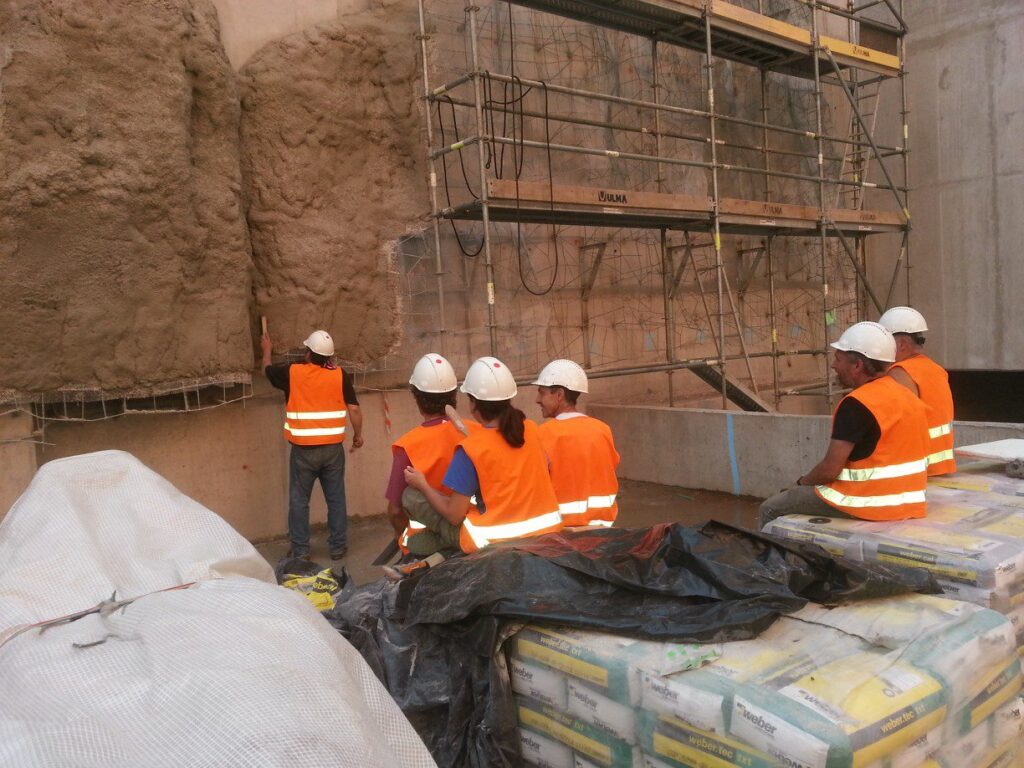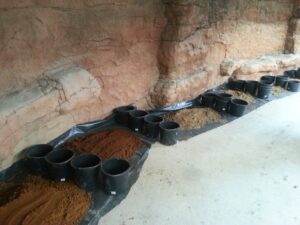Aligning Vision and Reality in Themed Construction
If you’ve ever worked on a construction project—especially one involving the creation of artificial rocks or trees—you’ve probably encountered one major challenge: how do you ensure that what you’re building aligns perfectly with the client’s or general contractor’s vision? It’s like trying to bake a cake with a recipe written on a napkin—you have the gist, but there’s plenty of room for things to go wrong. This very issue was brought up by Richard Winget from Authentic Environments USA Inc. in a lively LinkedIn discussion, which inspired me to dive into it here.
Samples: Those Small Pieces That Can Save (or Doom) a Project
Architectural samples are more than just small fragments of a larger project. In the world of themed construction—where we build concrete decorations like artificial rocks, trees, and other wonders of nature—samples serve as a kind of visual agreement between the contractor and the client.
The problem arises when these samples are treated too casually. The specifics get lost—should the rocks be massive and imposing, like those in the Grand Canyon, or more subtle and refined, like the ones you’d find in a serene Japanese garden? What about color and texture? During the discussion, it was highlighted that these details are often too vaguely defined. And when the work begins, the client’s vision and the contractor’s interpretation can be as far apart as New York and Los Angeles.

Why Sample Approval Is So Crucial (and Why It Sometimes Feels Like a Drama)
Sample approval is the moment when the client and contractor must fully agree on what the final product will look like. But in reality, it’s often more complicated than it sounds. Samples can be treated too superficially, leading to beautifully crafted rocks that suddenly seem too “rugged” or “too smooth” according to the client. Broker-style companies as Spencer Dean from Spencer Dean Creations mentioned, often rely on lower bids and don’t always have the right people in place to handle these nuanced decisions.
It was also noted that samples should ideally be created by the same artists who will work on the entire project. This makes sense—every artist has a unique style, and if one person makes the samples but another completes the final work, inconsistencies are almost guaranteed. It’s like starting a painting in one style and finishing it in a completely different one—interesting, but probably not what the client had in mind.
Color and Texture: The Keys to Success (or Failure)
 One of the most common issues that lack clarity regarding color and texture. Clients often have a vision in their minds, but without specific guidelines, the contractor is left to interpret that vision, which can sometimes lead to disaster. Padraic Mangan, who contributed to the discussion, suggested that samples should be created early, with continuous approvals at different stages of the project. Without this, contractors are left to interpret the client’s vision, which can lead to disaster.Imagine a client wanting subtle, natural hues, only to be presented with rocks that look like they belong in a theme park’s fantasyland—not exactly a match.
One of the most common issues that lack clarity regarding color and texture. Clients often have a vision in their minds, but without specific guidelines, the contractor is left to interpret that vision, which can sometimes lead to disaster. Padraic Mangan, who contributed to the discussion, suggested that samples should be created early, with continuous approvals at different stages of the project. Without this, contractors are left to interpret the client’s vision, which can lead to disaster.Imagine a client wanting subtle, natural hues, only to be presented with rocks that look like they belong in a theme park’s fantasyland—not exactly a match.
This is why it’s crucial to thoroughly discuss these aspects during the sample phase and ensure that everyone is on the same page.
Collaboration: How to Avoid the Common Pitfalls
Effective collaboration between the contractor and the client is key to a successful project. In projects involving complex structures like artificial rocks or trees, close communication and regular consultations are a must. As Robert McMullin mentioned in the discussion, one of the biggest mistakes is rushing into the project without setting up proper approvals for texture, color, and overall client intent. Nothing is worse than a contractor working full speed ahead, only for the client to suddenly say, “This isn’t what I had in mind.”
One effective approach mentioned was involving the client in the sample creation process. This way, both parties can make adjustments on the fly, ensuring that the final product aligns with expectations. If the sample is approved early on, work can proceed more smoothly, and the contractor can rest easy knowing they’re heading in the right direction.
Real-World Examples: When Projects Soared—and When They Sunk
It’s clear from the discussion that skimping on materials or choosing the cheapest option rarely ends well. The themed construction industry, particularly in creating artificial landscapes, requires investing in quality materials and experienced people. Samples that are given the attention they deserve become the foundation of successful projects. However, when they’re thrown together haphazardly, they can lead to endless problems.
The Takeaway: Learning from Mistakes (Because We All Make Them)
Working on themed construction projects is all about balancing the client’s vision with what’s actually feasible. Sample approval is a critical step where many potential problems can be avoided—if everyone involved approaches it seriously and with an open mind.
The LinkedIn discussion highlighted that, no matter where we work or what we’re building, we all face similar challenges. The key is clear communication, precise guidelines, and full collaboration. By getting this right, our projects can not only meet but exceed client expectations. And for us? We get the satisfaction of knowing we’ve created something that not only looks great but makes everyone—from the contractor to the client—happy.
If you’re interested in continuing this conversation, we’d love to have you join us on the forum at artificialrocks.org. It’s a place where we can share experiences, discuss challenges, and even have a laugh at the bumps along the way as we build the future of our industry together. Who knows, the next big idea that changes how we approach these incredible projects might just come from our discussions!







Loading…